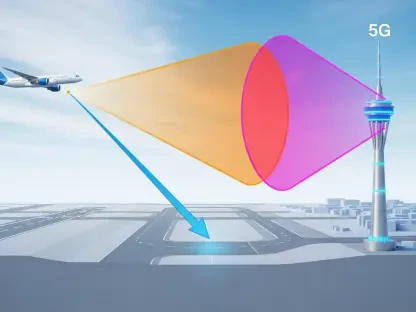In an age where global connectivity is the backbone of economic growth and social inclusion, SpaceX stands at the forefront of a seismic shift in the satellite and telecom industries, addressing the urgent need to bridge the digital divide. With over 60% of the world’s population still lacking reliable internet access, the challenge has never been more pressing, and SpaceX, through its Starlink initiative and strategic market maneuvers, is not merely filling gaps but redefining how connectivity is delivered across broadband and mobile services. This market analysis explores the trends, data, and projections surrounding SpaceX’s impact, shedding light on the competitive dynamics and future outlook of this rapidly evolving sector. The focus is on understanding how these innovations are reshaping market share, consumer access, and industry strategies.
Market Dynamics: The Collision of Satellite and Terrestrial Connectivity
The satellite and telecom markets have historically operated in tandem, with satellite operators providing niche solutions like backhaul services for remote areas while terrestrial providers dominated urban broadband and mobile networks. However, the emergence of Low Earth Orbit (LEO) satellite constellations has disrupted this balance, introducing a competitive edge that challenges traditional telecom giants. SpaceX, with its Starlink network boasting thousands of operational satellites, is a key driver of this shift, targeting rural and underserved regions where terrestrial infrastructure struggles to penetrate. Market data indicates that satellite providers could capture over 20% of funding from programs like the U.S. Broadband Equity, Access, and Deployment (BEAD) initiative, signaling a direct threat to established broadband players.
This competitive landscape is further complicated by the technological advancements that LEO systems bring, such as reduced latency and higher speeds compared to traditional geostationary satellites. Unlike older satellite services, which often lagged behind fiber and 5G in performance, Starlink offers download speeds averaging 100 Mbps in many regions, positioning it as a viable alternative in areas lacking high-speed options. Yet, capacity constraints in densely populated urban markets remain a hurdle, limiting its ability to fully rival terrestrial 5G networks. The market tension between collaboration and competition is evident as terrestrial providers grapple with whether to partner with or counter these orbital newcomers.
Shifting consumer demand also plays a pivotal role in this dynamic. As remote work and digital services expand, the need for reliable internet in rural and remote locations has surged, creating a fertile ground for satellite solutions. Industry projections suggest that the global satellite internet market could grow at a compound annual growth rate (CAGR) of 25% from now to 2030, driven largely by LEO operators. This growth trajectory underscores the urgency for traditional telecoms to adapt their strategies, either through innovation or alliances, to maintain relevance in an increasingly contested space.
Key Trends: SpaceX’s Strategic Moves and Market Impact
Starlink’s Broadband Push: Capturing Underserved Markets
Starlink’s aggressive entry into the broadband market has redefined connectivity for millions, particularly in rural and remote areas. By offering high-speed internet where fiber deployment is uneconomical, SpaceX has tapped into a significant unmet demand, securing a substantial share of government funding for connectivity initiatives. Reports suggest that Starlink serves over 1 million active subscribers globally, with growth concentrated in regions lacking traditional infrastructure. This foothold not only challenges terrestrial broadband providers but also reshapes market expectations for universal access.
The competitive advantage of Starlink lies in its ability to deploy rapidly compared to the slow rollout of fiber networks. However, urban markets present a different challenge, where high user density strains satellite capacity, resulting in inconsistent performance during peak usage. Analysts note that while Starlink excels in niche segments, scaling to compete with urban 5G and fiber solutions will require significant advancements in satellite density and bandwidth allocation. This limitation highlights a critical area for market observation as SpaceX seeks to balance rural dominance with broader applicability.
Beyond direct competition, Starlink’s presence is pushing traditional providers to innovate, either by accelerating rural fiber deployments or exploring hybrid solutions that integrate satellite and terrestrial services. The ripple effect of this disruption is evident in shifting investment patterns, with telecom companies reallocating resources to counter the satellite threat. As this trend unfolds, the broadband market is poised for a structural transformation, with SpaceX at the helm of redefining accessibility standards.
Direct-to-Device Innovation: Redefining Mobile Connectivity
SpaceX is pioneering a new frontier with direct-to-device connectivity, partnering with major mobile operators like T-Mobile to integrate satellite services into everyday smartphones. This initiative, often described as creating “cell towers in the sky,” enables features like emergency texting and limited app access in areas without cellular coverage. Pilot programs, such as T-Mobile’s T-Satellite service, demonstrate early success, with plans to expand into voice and data services as satellite constellations grow over the next few years.
The market potential for direct-to-device services is immense, particularly for emergency response and remote travel sectors, where connectivity can be a lifeline. Projections indicate that by 2027, over 500 million devices could leverage satellite-enabled mobile services globally, driven by partnerships between LEO operators and telecom giants. However, challenges such as spectrum availability and device compatibility remain, requiring substantial investment in infrastructure and regulatory navigation to achieve seamless integration.
Competitors like AST SpaceMobile, collaborating with carriers such as AT&T and Verizon, are also entering this space, intensifying the race to dominate direct-to-device offerings. SpaceX’s edge lies in its expansive Starlink network and strategic alliances, positioning it as a frontrunner in this emerging market segment. The convergence of mobile and satellite technologies signals a paradigm shift, with profound implications for consumer expectations and industry business models.
Spectrum Strategy: A Power Play for Wireless Dominance
A cornerstone of SpaceX’s market strategy is its recent $17 billion acquisition of EchoStar’s AWS-4 and H-block spectrum licenses, operating in the 1900-2200 MHz range. This spectrum, ideal for mobile satellite services (MSS), enhances Starlink’s direct-to-cell capabilities and fuels speculation about SpaceX emerging as a standalone mobile operator. The scarcity of MSS frequencies amplifies the strategic value of this acquisition, giving SpaceX a significant advantage in a resource-constrained market.
While some industry analysts question whether this spectrum can rival terrestrial mid-band 5G in capacity and performance, its potential to support bundled services—combining fixed broadband with mobile connectivity—presents a disruptive opportunity. Rumors of discussions with major tech firms to integrate this spectrum into future devices further underscore SpaceX’s ambition to redefine wireless connectivity. Such moves could reshape competitive dynamics, sidelining existing satellite partners and intensifying pressure on terrestrial operators.
The spectrum acquisition also highlights broader market trends around resource control, as operators vie for limited frequency bands to support next-generation services. SpaceX’s proactive approach in securing these assets positions it as a formidable player, capable of influencing regulatory frameworks and industry standards. As spectrum battles continue, the outcome will likely determine the pace and scope of satellite-driven disruption in the wireless sector.
Future Projections: The Orbit of Connectivity Markets
Looking toward the horizon, the satellite-telecom market is set for accelerated convergence, with LEO operators like SpaceX increasingly viewed as mainstream competitors rather than niche players. Projections suggest that by 2027, satellite broadband could account for 10% of global internet subscriptions, predominantly in rural and emerging markets. Innovations in direct-to-device connectivity are expected to evolve beyond emergency services, incorporating voice and data capabilities as constellations expand, with SpaceX planning thousands of additional satellites in the coming years.
Economic and regulatory factors will play a critical role in shaping this trajectory. Government funding programs and spectrum allocation policies will influence the competitive balance between satellite and terrestrial providers. Urban markets are likely to remain dominated by 5G and fiber due to capacity advantages, but SpaceX’s potential to bundle services could carve out unique market segments, compelling traditional providers to rethink pricing and coverage strategies. The interplay of these forces will define the extent of market disruption over the next decade.
Another key projection centers on consumer adoption and technological integration. As satellite connectivity becomes embedded in mainstream devices, user expectations for seamless access—whether at home or in remote locations—will drive demand. Industry forecasts anticipate a surge in hybrid network solutions, blending satellite and terrestrial capabilities to enhance resilience, particularly in disaster-prone regions. SpaceX’s role as a catalyst in this transformation positions it to influence not just market share but also the broader direction of connectivity innovation.
Reflecting on the Market Shift: Strategic Pathways Forward
Looking back, the analysis reveals how SpaceX has fundamentally altered the satellite and telecom landscape through Starlink’s broadband push, direct-to-device innovations, and strategic spectrum acquisitions. These moves have challenged traditional paradigms, carving out significant market opportunities in underserved regions while intensifying competition with terrestrial providers. The convergence of satellite and mobile technologies has emerged as a defining trend, with profound implications for accessibility and industry structure.
For stakeholders, the path forward demands proactive engagement with these shifts. Telecom companies need to explore partnerships with satellite operators to extend coverage and bolster network resilience, especially in critical scenarios like natural disasters. Consumers in remote areas can benefit from evaluating satellite-based solutions as viable alternatives, staying attuned to evolving mobile connectivity features. Policymakers face the task of crafting balanced regulations to ensure fair spectrum access and foster innovation without stifling competition. By aligning strategies with these emerging realities, all parties can navigate the complexities of a market where space-based solutions become integral to global communication networks.









